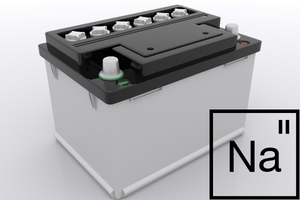Sodium-Ion Batteries. Are they the future?26 May 2022 | Paul As the world strives to be more environmentally conscious, battery technologies have come to be seen as a key part of a carbon-neutral future. Whether it's for electric vehicles or as storage for home solar systems, batteries are going to feature more and more in our day-to-day lives. As a result, great effort has been made by scientists to create longer-lasting, more powerful and cost-effective batteries and, to date, lithium-ion has risen above all others to become the best battery chemistry available. Sadly though, lithium-ion batteries come at a cost. The materials used to make them are rare, with only 14 million tons of lithium estimated in global reserves, with Chili boasting the largest reserve and Australia the second largest. This means that setting up recycling or re-use centres is critical to the long term success of lithium, with some estimates saying lithium resources could be depleted by 2040 unless we get it right straight away. The environmental cost of extracting lithium is also high, and whilst not as damaging as older battery technology, it still undoes a lot of the environmental good we are trying to achieve by using batteries in the first place.
For these reasons, scientists have been working on new battery technologies and may have found a more sustainable replacement. Sodium is an alkali metal similar to lithium and is best known for its huge reaction to water which many of us would have seen in GCSE science. With 1000 times more sodium available in the Earth's crust than lithium, & being the sixth most abundant element on the planet, it's very easy to source. So why haven't we used sodium-ion batteries before? Well, whilst the fundamentals of both lithium-ion and sodium-ion batteries are the same, one of the biggest issues plaguing sodium-ion was weight, with an energy density of 50Wh per kg when compared with lithium-ion's 200+Wh per kg. For this reason, the market was not willing to adopt sodium-ion as a new battery technology. Another issue is that sodium-ion technology doesn't work very well with the graphite anodes commonly used in existing battery technologies, posing another challenge to be overcome to increase their performance compared with lithium-ion.
CATL, the world's largest battery manufacturer, however, has not stopped working on the problems associated with sodium-ion batteries and may have made some real strives to help this technology become commercially viable. In 2021 they announced their 1st generation sodium battery which had an energy density of 160Wh per kg and could achieve an 80% charge within 15 minutes. This was thanks to a new material used for the battery cathode called Prussian White. This new material is cheap, non-toxic, and has been shown to maintain a storage capacity of 95% after 10,000 cycles which makes it a very exciting cathode material. A new anode uses a hard carbon material with a unique porous structure which allows it to move the sodium ions quickly and store them more easily. Another unique feature of these batteries is that sodium does not react to form an alloy with aluminium, and this has allowed CATL to use aluminium foil as the current collector on the anode side, helping reduce cost & weight. Sodium-ion batteries are also much safer as they are more thermally stable than lithium-ion batteries. On the manufacturing side, these new batteries can be made using existing lithium-ion production equipment and processes, meaning there is no expensive re-tooling required. A new patent by CATL shows further advances, with their 2nd generation sodium-ion battery boasting an energy density of 200Wh+ per kg, which is similar to that of modern lithium-ion technology. So what are your thoughts? Are sodium-ion batteries the future, or another pipe-dream?
|
|
12 Volt PlanetAuto & Marine Electrical Components |










